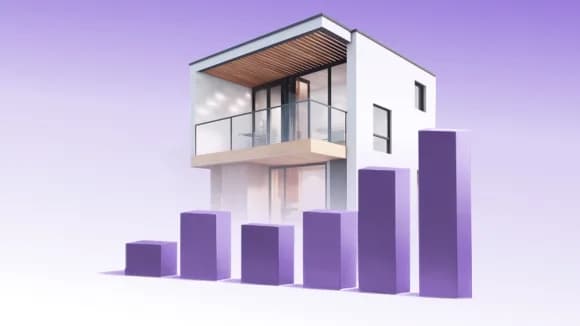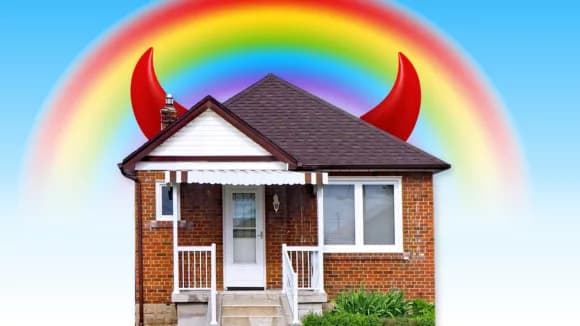
Number Crunching
How much do rents increase in NZ? (Rental inflation)
Find out how fast rents have increased in New Zealand so you can decide what to use when forecasting your investment properties.
Property Investment
6 min read

Author: Ben King
Ben has 14 years of experience as a mortgage advisor and background as an investment adviser.
Reviewed by: Ed McKnight
Resident Economist, with a GradDipEcon and over five years at Opes Partners, is a trusted contributor to NZ Property Investor, Informed Investor, Stuff, Business Desk, and OneRoof.
If you're investing in residential property, you've got 2 choices:
Both have their pros and cons. New Builds are new, and come with a selection of warranties built in.
Existing properties are older. That means they’re more likely to run into unforeseen maintenance issues.
On top of that, second-hand properties might not meet all the regulations like New Builds do.
Just remember, here at Opes Partners we help people invest in New Build properties.
So, there is an incentive for me to be biased … to tell you New Builds are the best, so only invest in them.
I’m not going to do that. Because the truth is that existing properties have their place.
But, since we have already written an article about the things wrong with New Builds, it’s important to also point out the problems with existing properties.
Some existing (second-hand) properties are up to 100+ years old.
Over time things wear out, and sometimes maintenance issues are left undiscovered for years. That’s why existing properties tend to have more maintenance.
You might need to replace the hot water cylinder or the roof. These types of costs are not only expensive; they don't add any extra value to the house.
An investor I worked with recently said to me: “I’ve just paid $40k for a new roof”. He was expecting to have added value to the property.
I told him it wouldn’t. Because every renter expects a property with a roof. It’s a bit like buying a car without a steering wheel.
Replacing the steering wheel doesn’t add value. Buyers expect every car to have a working steering wheel anyway.
So, while a new roof will likely cost you between $15-$50k, you’re only paying to bring the house back to the minimum standard.
I recommend increasing your annual maintenance budget depending on how old your property is.
If it’s a newer property, then $500 a year should do. If your property is 10 years old, then factor in $1,000 a year.
If your property is 20 years old, then I factor in $2,000 a year. But if your property is 30 years old (or older), put aside $3,000 a year.
That’s about $60 a week.
Building regulations tend to get tougher over time.
So it’s fair to say that older existing properties aren’t always built to the same standard as more modern homes.
Every decade has had its issues in property.
For example, “leaky homes” became a big issue in the 2000s.
This is because water leaked through the outside cladding and into the home itself, until the Building Act was amended.
The issue here is it can cost you to upgrade your property to current building code.
Similarly, older homes are often single-glazed. This makes them colder and less noise-resistant.
Which means they are not as nice for tenants.
On top of this, many second-hand (existing) homes won’t meet the Healthy Homes standards needed to legally be a rental.
For example, you need to have a heat pump in the main living area (and it must have a certain minimum strength depending on where your house is).
If your home isn’t up to standard, you’ve got 120 days to sort it out.
This can come as an extra cost to the investor.
Existing properties often tend to give a lower return on investment. This is because existing properties go up at a similar rate to New Builds but they require a larger deposit.
Let’s say Mark has two properties he’s looking at. One is a New Build, the other is an existing property.
They're both worth $600k. They both double in value over the next 15 years, so they both made $600,000.
But Mark only had to put in $120,000 to buy the New Build property (20% deposit).
He had to put in $180,000 to buy the existing property (30% deposit).
That means he made a 500% return on the New Build, but the existing property delivered only a 333% return.
The return was the same, but the investment was different.
The Reserve Bank has just introduced debt-to-income ratios (DTIs). These new rules tie the amount you can borrow to your income.
But the new rules only count if you are buying an existing property.
Here are the rules the Reserve Bank just brought in:
If you and your partner earn $100k a year combined, the maximum you can borrow is:
The Reserve Bank has released modelling that indicates how many properties you can potentially buy if you invest in New Builds vs existing properties.
Let’s say Jenny owns 1 investment property today.
If DTIs didn’t come in, the Reserve Bank thinks Jenny could buy another 5 investment properties in 10 years.
With DTIs, that number goes down to 3 more properties.
So, these rules will slow some existing investors down.
The biggest benefit for existing properties is you can renovate them to add value.
This means you can create an immediate increase in the value of your property.
For example, you buy a property for $550k, and spend $50k renovating it.
Now it’s worth $650k. You’ve got more equity, and your rent has gone up.
So, if you are a hands-on investor, this can be a really good way of growing your wealth.
But renovating takes a lot of time to do well, and involves a lot more stress.
Mike was an extremely hands-on investor since he began at 23.
His strategy was: Buy it, live in it, do it up, set it up. And he did make a lot of money.
One property sold for a $160k profit in 5 years – a ridiculous amount to make.
But after 2 kids, his life has changed. And so after 16 years of painting, hammering, and paying tradies with beer – he’s switched sides.
He’s bought a New Build townhouse in Spreydon, and he plans to “never ever, not once” step foot in it.
He said, “If I knew 16 years ago what I know now … I’d do New Builds in a heartbeat.”
Investing in newer properties was less stressful because he let the experts do all the heavy lifting. That meant he could concentrate on other aspects of his life.
Mike's a natural storyteller, and he made us laugh on his episode on the Property Academy Podcast.
This article isn’t trying to say that existing properties are a bad investment. That’s not true.
Existing properties have their place, particularly if you are an active investor. You can add a lot of wealth into your property through renovations.
But you are going to have to do a lot more due diligence on an existing property. This is because you don’t have as many guarantees in place and you’re likely buying a much older property. So, you’re taking on a bit more risk.
Ben has 14 years of experience as a mortgage advisor and background as an investment adviser.
Ben brings a wealth of experience to the table with his 14 years as a mortgage advisor and background as an investment adviser. His dedication to helping clients reach their financial goals is central to his work.
This article is for your general information. It’s not financial advice. See here for details about our Financial Advice Provider Disclosure. So Opes isn’t telling you what to do with your own money.
We’ve made every effort to make sure the information is accurate. But we occasionally get the odd fact wrong. Make sure you do your own research or talk to a financial adviser before making any investment decisions.
You might like to use us or another financial adviser